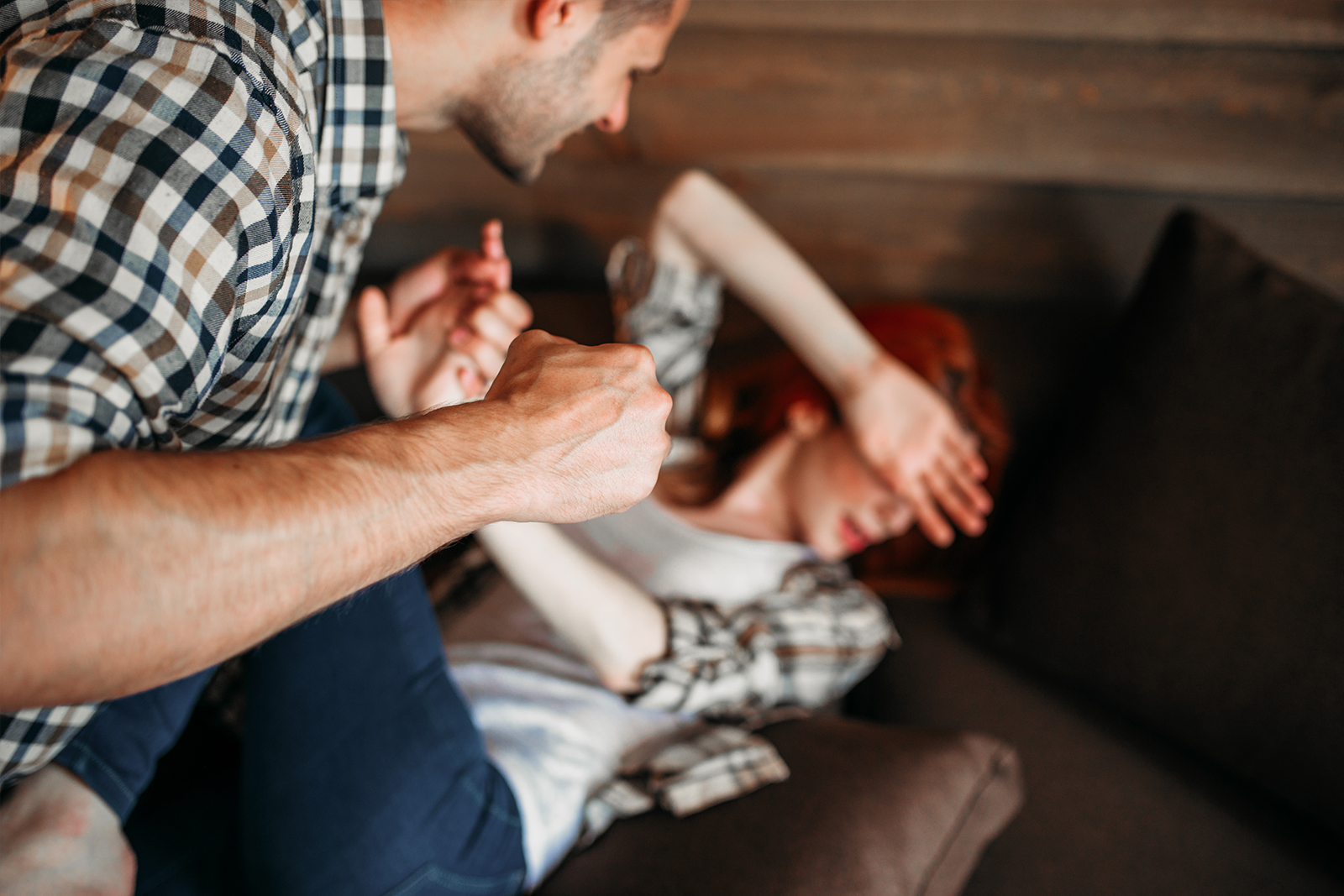
Rhode Island Domestic Violence Attorney
Protecting Your Rights and Your Future in Domestic Violence Cases
Domestic violence cases in Rhode Island are complex and emotionally charged. Whether you are seeking protection from an abusive situation or have been accused of domestic violence, the legal system can feel overwhelming. At The Law Offices of Timothy M. Sweet, we provide strategic, compassionate, and aggressive legal representation to individuals facing domestic violence-related legal issues.
As an experienced RI domestic violence attorney, Tim Sweet understands the stakes. Your safety, reputation, and future may be on the line. He is dedicated to guiding you through the legal process, protecting your rights, and ensuring the best possible outcome for your case.
Understanding Domestic Violence Laws in Rhode Island
Rhode Island law defines domestic violence as any act of abuse committed against a family or household member. This includes:
✔ Physical assault (hitting, punching, pushing, or strangulation)
✔ Emotional abuse and threats
✔ Harassment and stalking
✔ Sexual abuse
✔ Violation of a restraining order
Under Rhode Island’s Domestic Violence Prevention Act, law enforcement takes these accusations seriously. Even a simple domestic disorderly conduct charge can have lasting consequences, including protective orders, fines, probation, or even jail time. If you are facing a domestic violence charge, you need a skilled Rhode Island domestic violence lawyer to advocate for your rights and build a strong defense.
Legal Protection for Victims of Domestic Violence
If you are a victim of domestic abuse, your safety is the top priority. Tim Sweet works diligently to help clients secure restraining orders and protective orders to protect them from further harm.
A Restraining Order can:
✔ Require the abuser to stay away from you, your home, and your workplace
✔ Prohibit the abuser from contacting you by phone, email, or social media
✔ Grant temporary custody of children
✔ Prevent the abuser from owning or possessing firearms
Tim Sweet will stand by your side every step of the way, helping you file for legal protection and ensuring the court understands the urgency of your situation.
Frequently Asked Questions about Domestic Violence & RI Domestic Violence Laws
- What should I do if I am in a domestic violence situation? First, make sure you and your children are safe. Do not wait for your abuser to “calm down”. Just because your abuser has temporarily ceased his or her attack does not mean he or she is finished or that you are safe. Too often, domestic violence occurs in waves. If you have a vehicle, leave the home (or place of abuse) right away. Go somewhere your abuser will not naturally think to search for you. If you are not alone and you have loved ones with you make sure that they do not answer the phone if the abuser calls them and / or post where you are going. As soon as you are in a secure spot call the police. Don’t do anything else until you call the police. Tell the police that you are safe for now. Give them your location, your abuser’s last known location, and some context (be sure to let them know if there has been prior abuse). Let the police know if your abuser has weapons of any kind. Let the police know if your abuser is or may be under the influence of alcohol or drugs. Let the police know if your abuser has a significant criminal record (such as if he or she is currently on parole). Let them know if you have been the victim of sexual abuse. Let them know if you already have a No Contact Order or Restraining Order in place against your abuser. Be sure to accurately describe the most serious injury sustained. Most importantly, if you have been the victim of sexual abuse of any kind do not shower, bathe, wash or cleanse yourself of any forensic evidence. This is counterintuitive and is a common mistake of victims of sexual abuse, who, naturally, only want to wash the experience away. However, doing so also often destroys the victim’s case against the abuser and leaves the victim in a “he said, she said” scenario (particularly if the abuser is the victim’s spouse).
- What Should I do after I am in a safe place and have phoned the police?Now that you and your loved ones are safe, the police are en route, and the evidence of abuse is documented you must decide whether to call DCYF. The rule is simple. If there has been any abuse, of any kind, or any threat of any abuse of any kind toward any of your children (natural, step, or adopted) from your abuser it is your responsibility to call the DCYF hotline immediately. Do not wait for “normal business hours”. Call the hotline. Do not presume the police will contact DCYF. Call the hotline. Do not presume that your abuser is, in actuality, a good mother or father and simply made a mistake. Call the hotline. Do not worry that you are bothering DCYF when they have “more important” matters to handle. If your child or children suffered abuse and you do not call the DCYF hotline the Department may well indicate you as a neglectful parent! Call the hotline. When the police arrive (possibly with an ambulance) they will interview you, your children (if they are with you) and any potential witnesses. They may or may not briefly examine your injuries. The police may seem aloof or even accusatory of you. Do not question for one moment that they are simply doing their job. The police officer is truly worried about your well being. They may or may not be forthcoming about how they plan to proceed against your abuser. The police will ask you if you wish to press charges. If you do not opt to press charges then you should know that it is likely that at some point your allegations will not stick against your abuser and that in most cases he or she will end up, at worst, with an Alford or nolo contendere plea which depending on the penalty will not be considered a criminal conviction. Be sure to file a report. Get a copy of that report.
- What will happen if my abuser is arraigned? If your abuser is arraigned (a criminal proceeding wherein the Defendant is formally read his or her charges, enters a plea, and sometimes bail is set) in District Court then a No Contact Order will automatically apply. This means that your abuser will not be allowed to contact you in any way, shape, or form. THIS DOES NOT MEAN THAT YOU ARE SAFE. District Court No Contact Orders only last as long as the criminal proceeding that issued them. That means (as is often the case) that if the matter is dismissed prematurely or your abuser plea bargains out of the process and the case is disposed of the No Contact Order ends and you are no longer protected. For this reason your second-to-last step in this grueling process is the RI Family Court to obtain a Restraining Order (very different from a No Contact Order). A Restraining Order can be obtained without your abuser even knowing about it (at first)! Call the Court to be connected to the domestic violence department and tell them the city or town where you live (not where the abuse occurred). This will determine in which RI Family Court county you should apply for a Restraining Order (there is a Family Law Court in Providence, Kent, Washington, and Newport county). File for a “Temporary” Restraining Order without notifying your abuser, in the appropriate county even if you already have a No Contact Order. Restraining Orders demand that your abuser leave the home or apartment where you live, they grant temporary custody of your children, and they order your abuser to turn over any firearms to the police. A No Contact Order will not do any of these things. Obtain a Temporary Restraining Order by filling out the packet (most importantly the affidavit) and present the evidence you documented of your injury. Explain concisely that you are currently in fear of your abuser. Tell the judge or magistrate if you have any witnesses to the abuse (bring the witness with you to Court). This Restraining Order will last almost three weeks at which point, if you want to keep it in place, you must serve notice upon your abuser and have a hearing. A Restraining Order can last up to three years.
- Anything else I should know or keep in mind while going through this process? Lastly, be sure to have a “Plan B” moving forward. No matter what you should have concrete plans regarding where to go should you suffer abuse again. Do not share your “Plan B” with anyone, especially your children, other than the person whose home or apartment you would need to stay in if your abuser violates the Orders discussed above. Be sure to leave this plan in place if you reconcile with your abuser. If you do reconcile be sure to remain candid and forthcoming with DCYF in their ongoing investigation.





